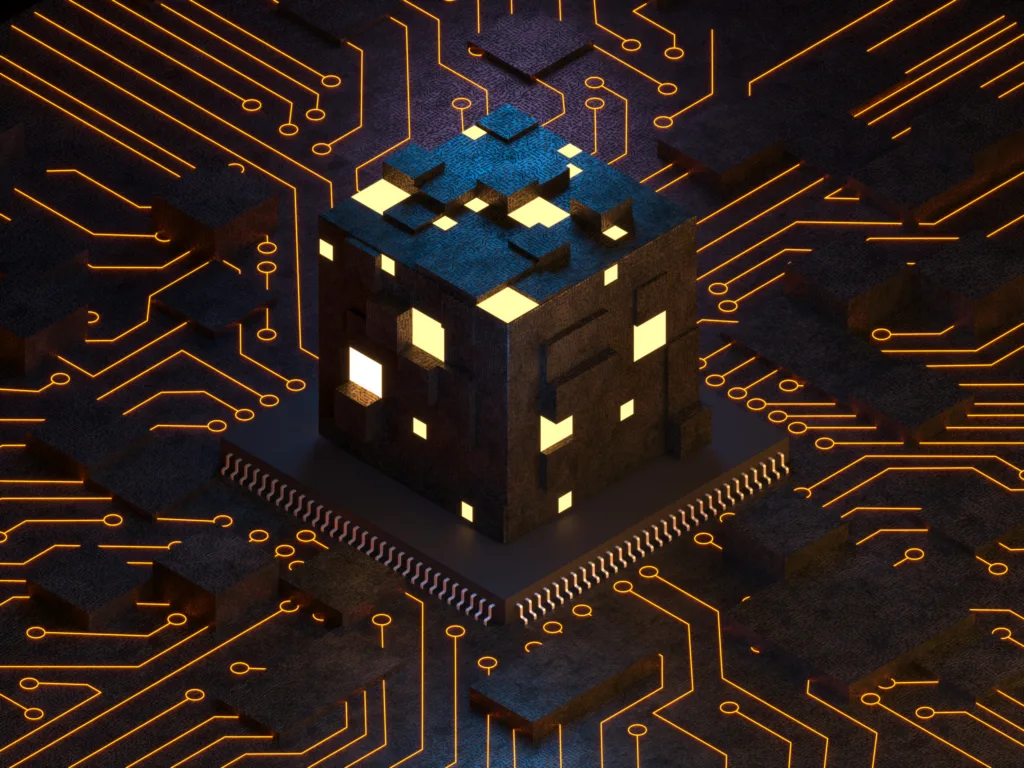When you purchase through links on our site, we may earn an affiliate commission. This doesn’t affect our editorial independence.
Decentralised finance (DeFi) allows people to transact and control their money using blockchain technology and cryptocurrency.
DeFi uses computer programs called smart contracts to regulate transactions between two people, unlike traditional/centralized financial transactions controlled by banks or other institutions that charge fees to mediate the process. The programs promote transparency and accuracy while allowing a seamless transaction.
Simplifying Common Terminologies In DeFi
- Blockchain is a digital record book (ledger) that records transactions in linked encrypted files, ensuring these transactions cannot be altered.
- Smart contracts are digitally encrypted rules that regulate the transactions done in blockchain; they ensure transparency and reduce foul play.
- Cryptocurrency is best described as a digital currency or asset secured by a secret code often called a token. The token ascribes ownership exclusively. The name is derived from the encrypted nature of the currency.
- Arbitrage exists in other facets of finance, but for DeFi, it means buying and selling assets across different markets with price differences. It promotes profit and balances the overall scale of the price of assets.
- Liquidity pool is a trading pool composed of crypto tokens locked by a smart contract. It is a feature of DEX, facilitating fast transactions that require no middlemen.
- Automated market maker (AMM) is a decentralised trading system that creates liquidity pools for people to buy and sell their assets. It is made and controlled by an algorithm, eliminating the middlemen. The most popular AMM is Uniswap.
- Total Value Locked (TVL) refers to the total value of assets a DEX protocol holds. It is the total secure supply or the value of how big the platform is.
Applications of DeFi
The ease of transaction provided by Decentralised Finance ensures a more fluid exchange of value. It removes the barricade of status and financial authority, allowing ease of transaction for a select few. Currently, global users of DeFi amount to about 7.5 million, and it’s still increasing; it is estimated that by 2028, global users will have risen to 22.8 million.
Decentralized exchanges (DEXs): One of the biggest applications of DeFi is in financial exchanges, where people can buy and sell cryptocurrency with anyone from anywhere. Transactions are constantly fluid and fast because of the liquidity pools that ensure cash flow and maintain cash reserves.
Yield farming: Yield farming is another popular venture with DeFi, allowing people to invest in liquidity pools (like penny ponds where people gather digital assets). Borrowers can take loans with interest, which brings lenders more crypto.
Non-fungible tokens (NFTs) are unique indivisible tokens or assets stored in the blockchain. They have different values and serve as stores of wealth and exchange in the DeFi.
Benefits
Accessibility: DeFi allows people to transact anywhere at any time.
Lower costs and faster transactions: Because of the absence of middlemen, transactions are smoother and cheaper.
Greater control over assets: The main goal of DeFi is to maximize control and create a system that is not reliant on any central authority; hence, the name decentralized. It grants autonomy
Security and privacy: Blockchain technology affords high security as transactions cannot be altered. It also promotes anonymity
Transparency: Smart contracts mediate transactions and ensure transparency.
For 2025 cryptocurrency trends, click here.
Risks and Challenges
Decentralised Finance is a relatively new system; therefore, cash flow isn’t as high as most think. Reports show that DeFi has less than one percent of money compared to the traditional channels. Also, it is an unregulated channel, and transactions are not impervious to breach. Smart contract bugs, hacks, and scams occur, and some DeFi applications are still vulnerable to hacks.
Also, there is the risk of volatility as this system is prone to exaggeration and hype, causing inconsistencies and fluctuations in prices and value. Because of these risks and challenges, users and traders alike are advised to tread carefully and not commit their life savings to DeFi.
